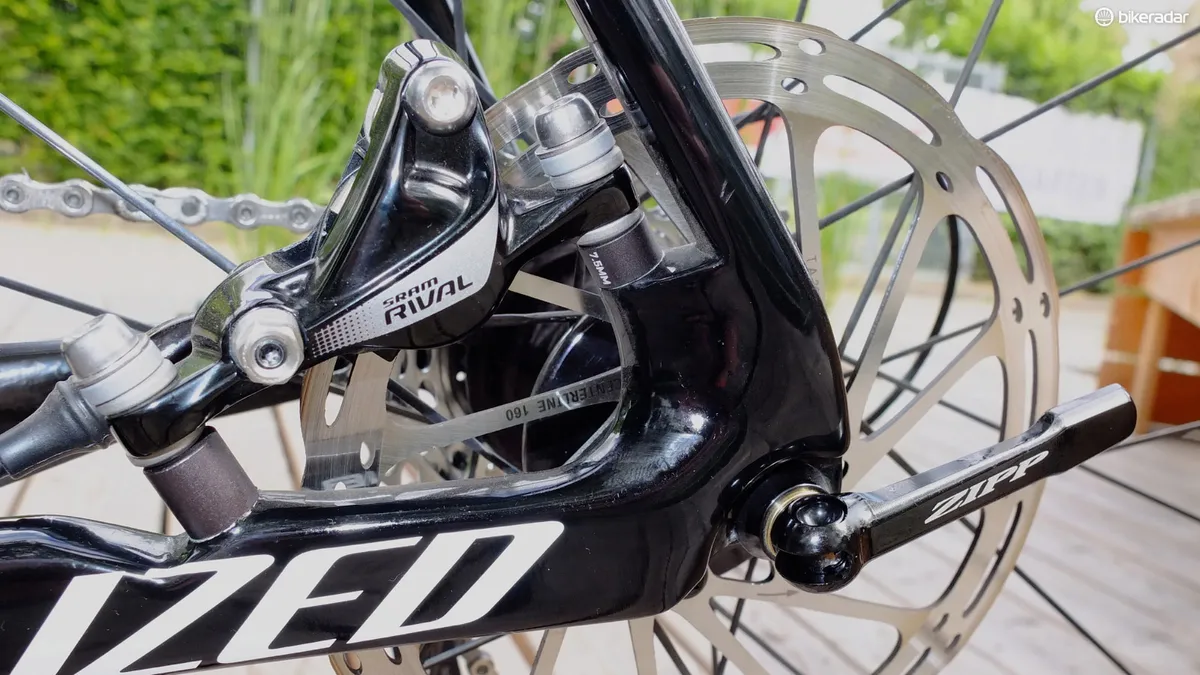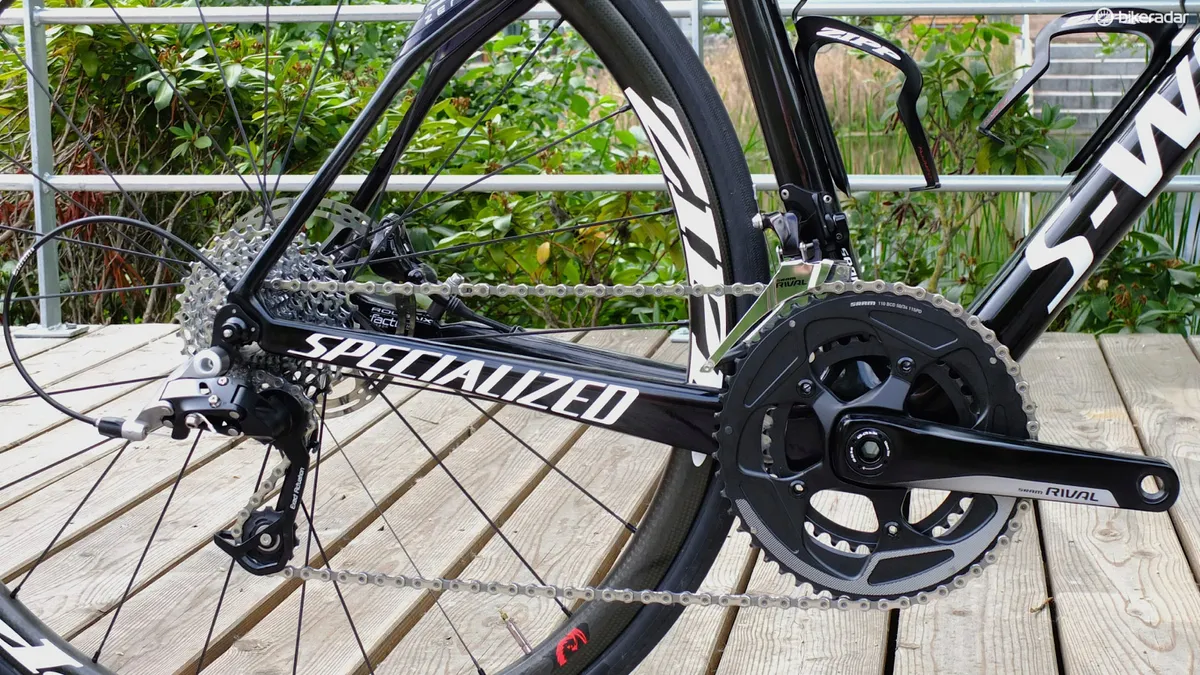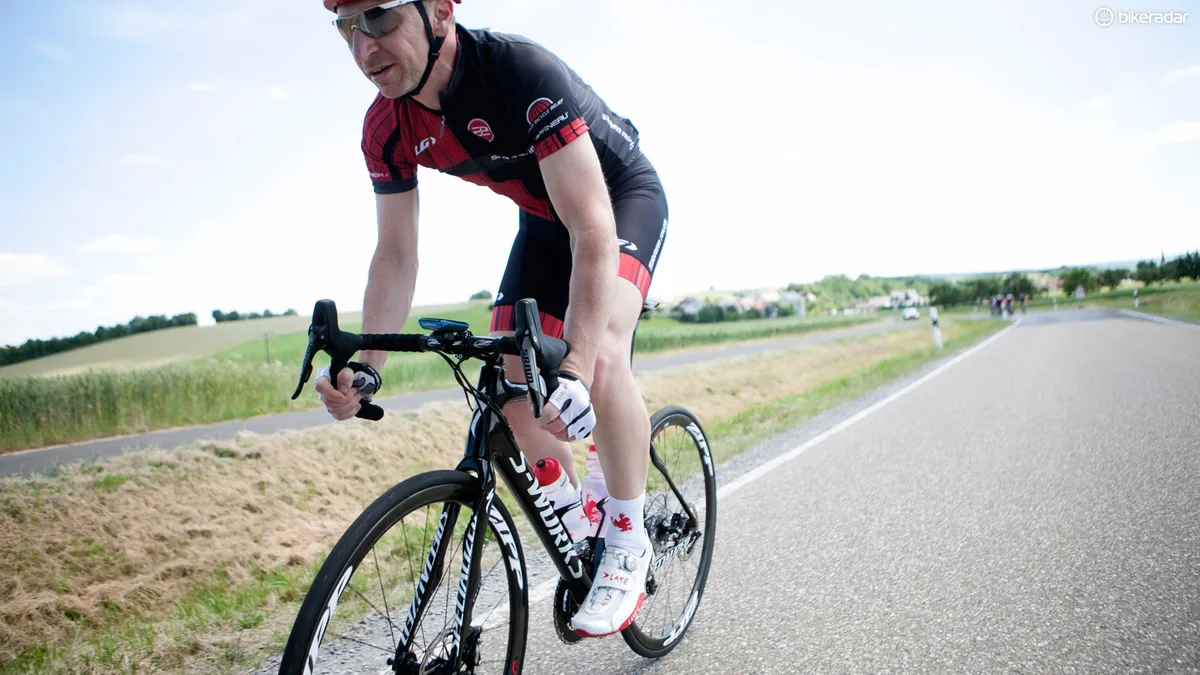Of SRAM’s four new hydraulic groupsets, Rival has undergone the greatest change, evolving from 10-speed with cable braking to an 11-speed group available in versions with traditional cables, hydraulic rim or hydraulic disc brakes. There’s a strong family resemblance between the Rival 22 and its high-end siblings, Force 22 and Red 22, thanks to shared features and trickle-down styling.
We tested the Rival 22 HydroR with disc brakes on a Specialized Roubaix Disc and Zipp’s new 202 Firecrest CCL disc wheelset.
The complete Rival 22 HydroR group with 160mm rotors weighs a claimed 2.9kg (6.4lb), up from 2.3kg (5.1lb) for the mechanical group and 2.5kg (5.5lb) for the HydroR rim group.
The newly updated hydraulic levers have a more ergonomic shape than their first incarnation. The front of the upper portion above the pivot is more curved than the original, and is trimmed down, allowing those with smaller hands to better wrap fingers around the hoods. Having ridden the old S-700 levers all winter, Rival’s new option felt quite familiar, but certainly more comfortable. The rubber hoods seem unchanged, with a large flat section that blends well with most bars giving a comfortable transition and plenty of grip options.

The new Rival 22 HydroR hood shape fits comfortably under your hand
Reducing the overall size of the shift paddles hasn’t affected shifting effectiveness, with plenty of purchase for two fairly chunky fingers to push the levers. There’s more room between paddle and bar to lessen the chance of fingers contacting the paddle unnecessarily when on the drops or the hoods. It should also prevent the likelihood of the paddle sticking against the handlebar tape, especially super grippy tape, when brake levers are pulled close to the bars due to brake wear or personal preference.
The shift feel is slick and positive, with an action much like our old S-700 10-speed levers that never missed a beat all cyclocross season long. We explored the extremities of the new 11-speed Rival’s gearing, cross-chaining and shifting at unwise moments, and found no problems with our 50/34t rings and 11-32t cassette with mid-cage WiFli rear derailleur. There was no rub in any gear combination, thanks to the Yaw front mech, and from the saddle. Functionality was flawless for a budget group.
With Rival’s hydraulic disc option fitted, we were able to test out the new calipers and Centerline rotors. Following a similar compact family design, the calipers use 18mm pistons front and rear, and our bike was fitted with SRAM’s road recommendation of 160mm rotors. Brake modulation had a refined feeling, with subtle initial engagement building in to progressive power, with ample in reserve if needed, and all with considerably less lever force than a mechanical setup. Bunch speed corrections, technical corners, steep descents and sudden stops were all equally devoid of drama, and the new caliper spring played its part by avoiding pad rub and aiding even contact.

SRAM recommends 160mm rotors for road and 140mm for cyclocross
We appreciated the inclusion of a chain spotter — peace of mind for keeping the chain on with virtually no weight penalty. Also, the 110mm BCD compact crank means you can put on bigger gears if you like, up to 52/36, but not the full 53/39. (Related reading: What is a compact crank?) It makes perfect sense for this budget-minded group, as the 52/36 semi-compact combination is sufficient for the majority of riders. Five crank lengths between 165mm and 175mm also increase potential usage across the board.
SRAM's pricing on its groups is interesting. In the US, SRAM is cheaper than comparable Shimano groups; in the UK and elsewhere, it can be more expensive. This new Rival 22 HydroR disc group, for example, is US$1,302 with 160mm rotors. If you figure in 8% tax, that's about $1,400 which is equivalent to £863. However, UK pricing is set at £990 (including VAT). Similarly, a Euro conversion would put the group at €1,080. Instead, it is €1,157 (including VAT). All that's to say, while SRAM's third-tier Rival 22 HydroR is a budget group, it's a better deal in the US than elsewhere.

A compact 50/34 crank with an 11-32 WiFli cassette makes for relatively easy climbing



